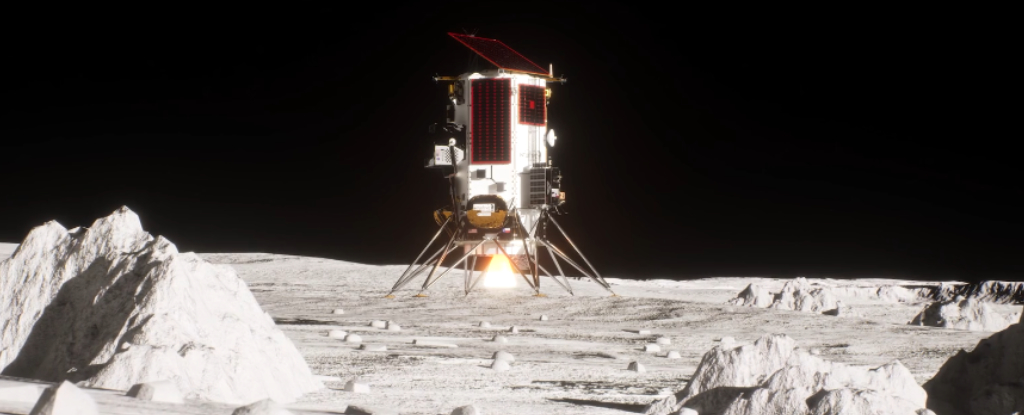
On March 6 at approximately 12:32 PM ET, Intuitive Machines’ lunar lander, Athena, successfully touched down on the Moon. The mission, which aimed for a landing site near Mons Mouton—about 100 miles from the lunar south pole—marked a significant milestone for private lunar exploration. However, shortly after landing, mission controllers encountered difficulties in determining the lander’s exact orientation.
Unlike last year’s Odysseus lander, which tipped over upon landing, Athena’s position remains unclear. Initial signals confirmed that the lander is operational, but verifying whether it remained upright has proven challenging. NASA, which invested $62 million into this mission as part of its Commercial Lunar Payload Services (CLPS) initiative, is working closely with Intuitive Machines to assess the lander’s status and functionality.

Athena traveled an astounding 238,000 miles (383,000 km) from Earth, carrying 11 scientific payloads. Among them is a drill designed to extract lunar soil samples, which researchers hope will provide critical insights into the Moon’s composition and potential for future human exploration. The mission’s success could pave the way for further lunar endeavors, despite the ongoing technical hurdles.
As engineers work to analyze the lander’s telemetry and confirm its orientation, the mission continues to highlight the complexities of space exploration. Whether Athena’s instruments can operate effectively in its current state remains a key question, but the data it collects could still provide valuable contributions to lunar science.
Stay tuned for further updates as Intuitive Machines and NASA work to overcome these challenges and maximize Athena’s scientific output.
Sources: NASA, Reuters, APNews, NYTimes, SpaceNews.



